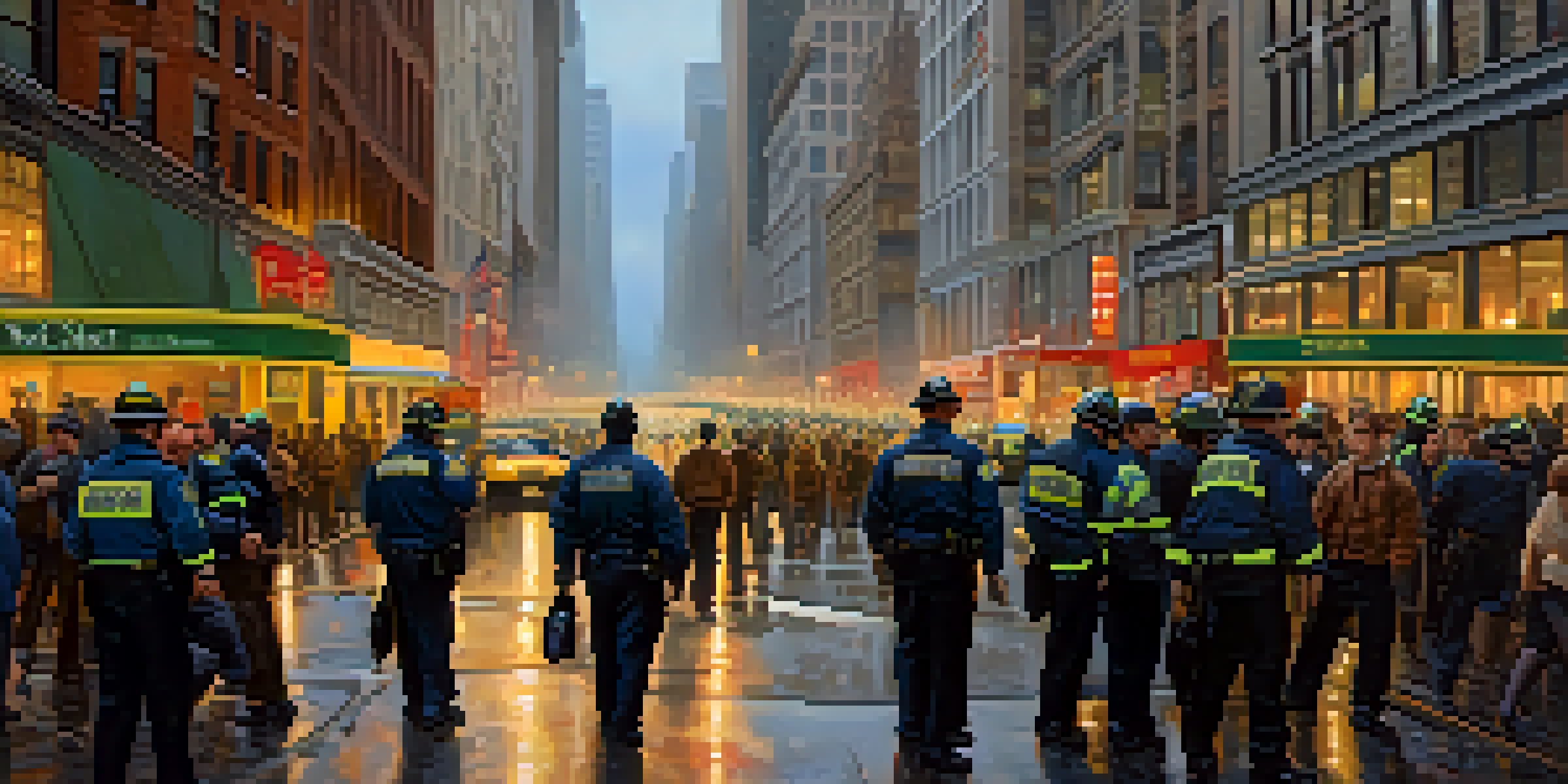Evaluating NYC's Crisis Communication During Natural Disasters

Understanding Crisis Communication in Urban Environments
Crisis communication is vital for urban areas, especially in cities like New York. When natural disasters strike, effective communication can save lives and minimize chaos. It involves sharing clear, timely information to help residents make informed decisions during emergencies.
Historical Context: NYC's Response to Past Disasters
New York City has faced numerous natural disasters, from hurricanes to blizzards. Each event provides a lesson on the importance of communication. For instance, Hurricane Sandy in 2012 highlighted both strengths and weaknesses in the city's crisis communication strategies.
Crisis Communication Saves Lives
Effective crisis communication in urban areas like NYC is crucial for guiding residents during emergencies and minimizing chaos.
The Role of Technology in Crisis Communication
In today's digital age, technology plays a crucial role in crisis communication. Social media platforms allow for rapid dissemination of information, reaching audiences quickly. NYC's use of Twitter, for example, has become a lifeline for real-time updates during emergencies.
Evaluating Current Communication Strategies
NYC has implemented various strategies to improve its crisis communication. These include regular drills, public awareness campaigns, and partnerships with local media. Evaluating these strategies helps identify gaps and areas for improvement.
Technology Enhances Information Flow
Digital platforms, particularly social media, play a vital role in rapidly disseminating critical information during disasters.
Community Engagement: A Key Component
Engaging the community is essential for effective crisis communication. NYC has made efforts to involve residents in preparedness initiatives, fostering a sense of ownership. When communities feel informed and involved, they are better equipped to respond during disasters.
Challenges Faced in Crisis Communication
Despite advancements, challenges still exist in NYC's crisis communication. Misinformation can spread rapidly, complicating efforts to inform the public. Additionally, language barriers can hinder effective communication among diverse populations.
Community Engagement is Essential
Involving residents in preparedness initiatives fosters a sense of ownership, making communities more resilient during crises.
Lessons Learned from Recent Disasters
Recent events have provided valuable lessons for NYC's crisis communication. The COVID-19 pandemic, while not a natural disaster in the traditional sense, tested the city's response mechanisms. Adapting strategies based on these experiences is crucial for future preparedness.
Looking Ahead: Future Improvements in Communication
The future of crisis communication in NYC lies in continuous improvement and adaptation. Investing in new technologies, enhancing community engagement, and addressing language barriers are key areas to focus on. By learning from past experiences, NYC can better prepare for future natural disasters.